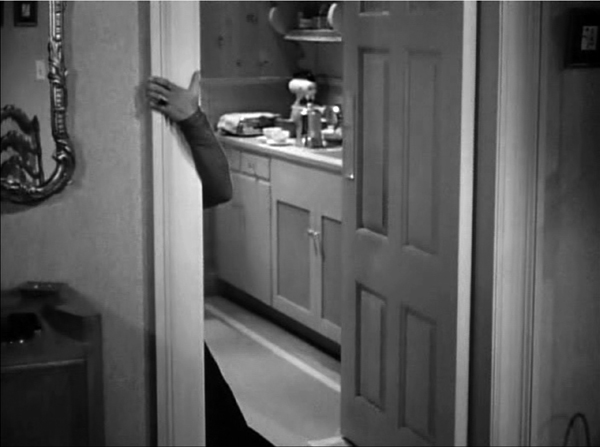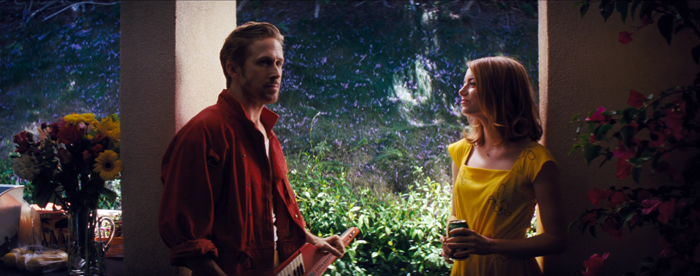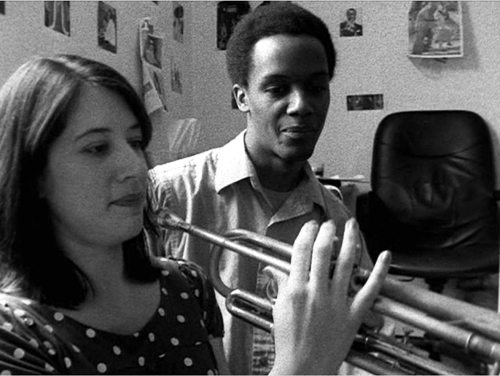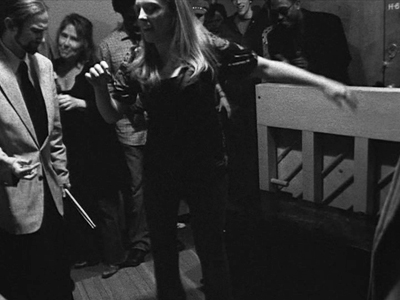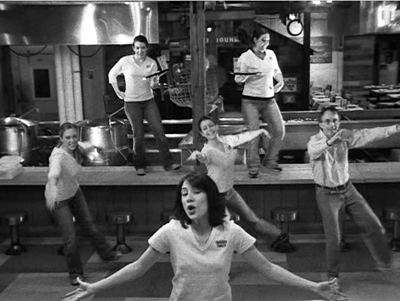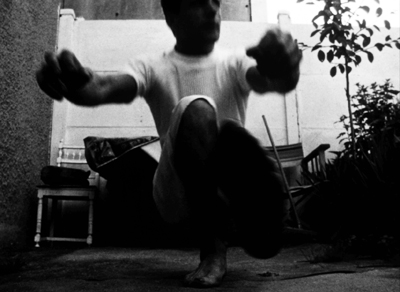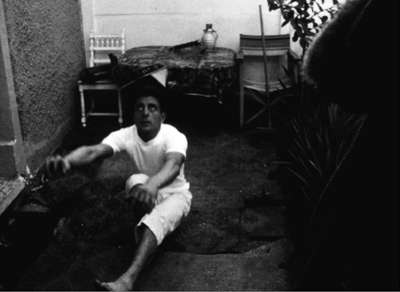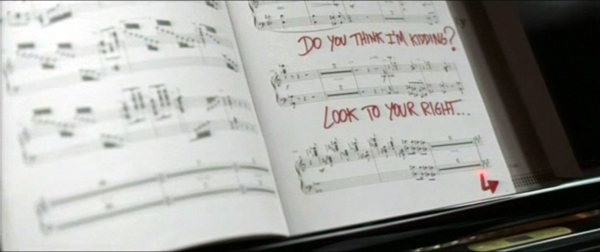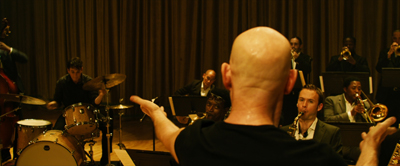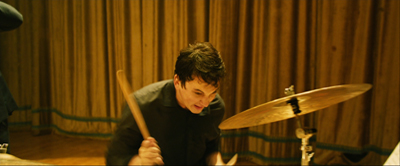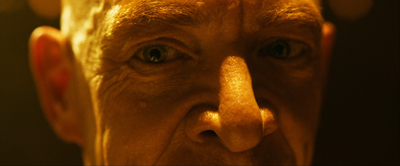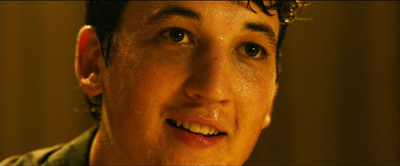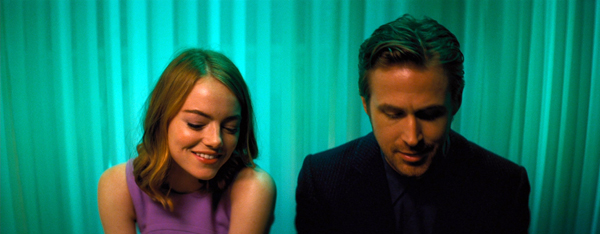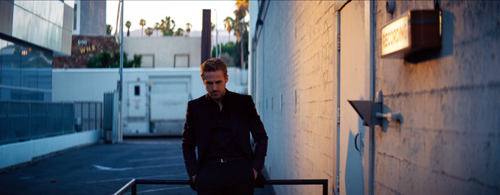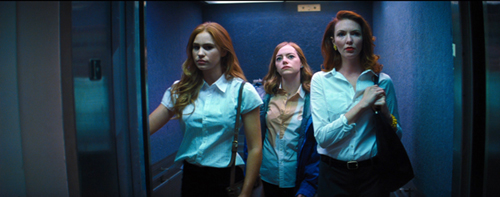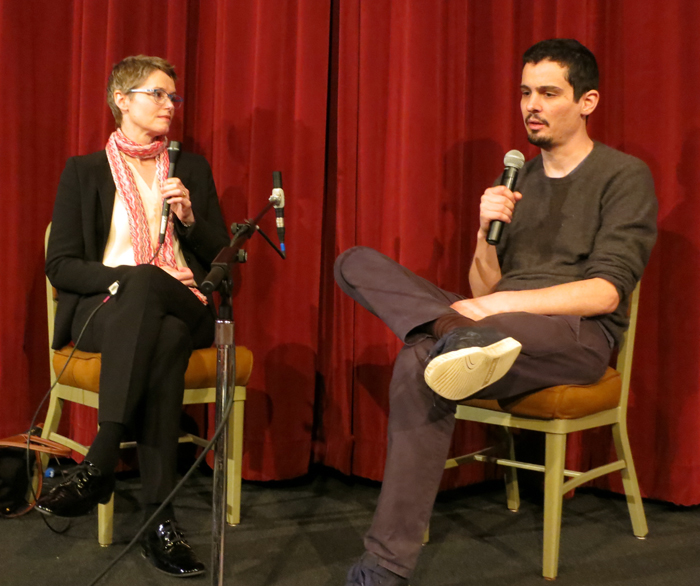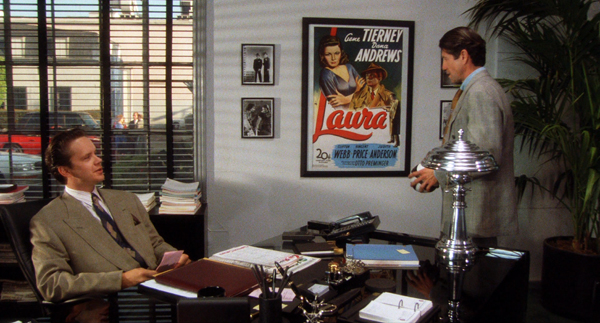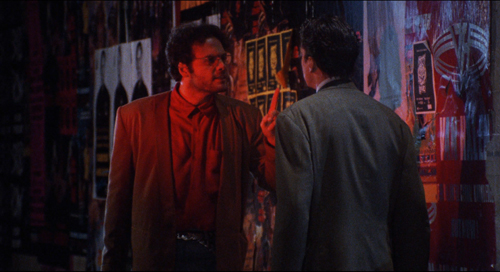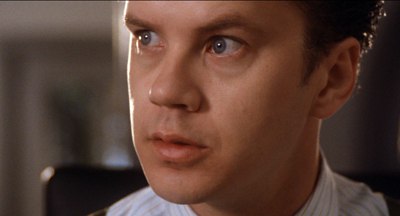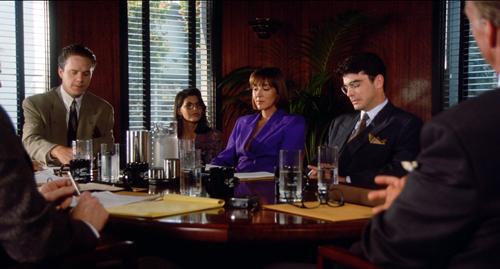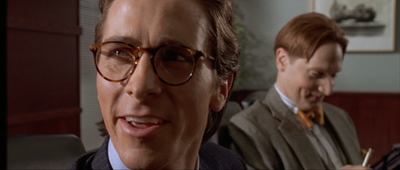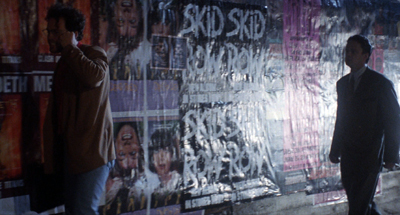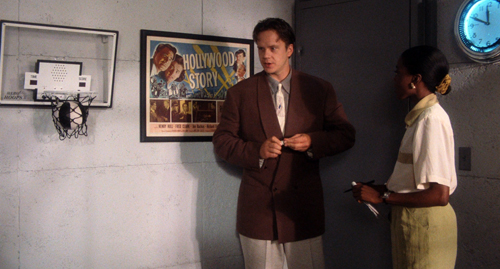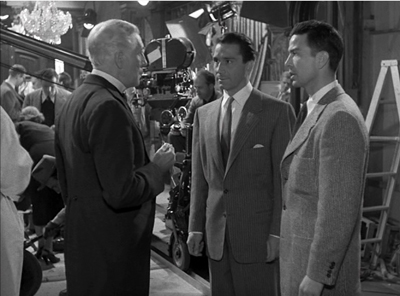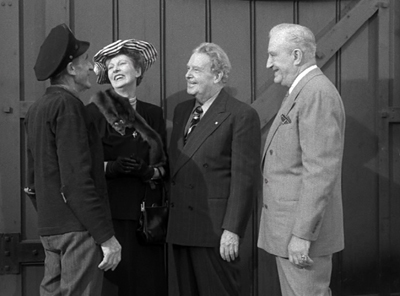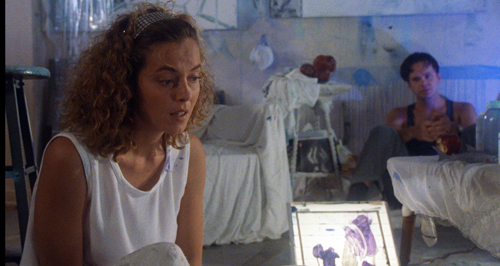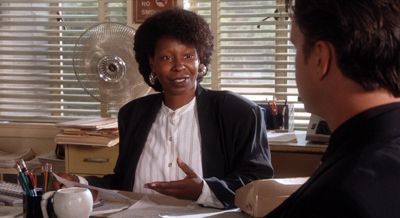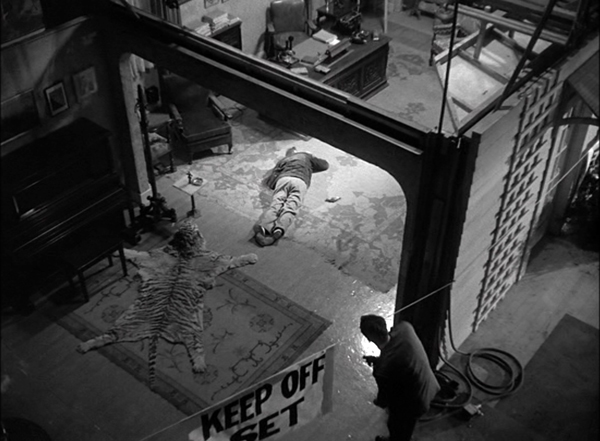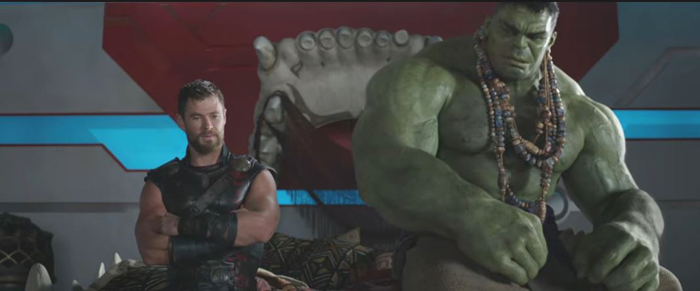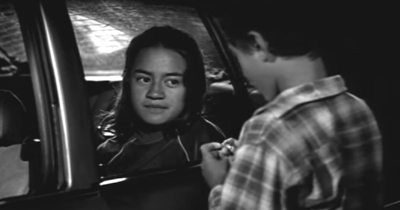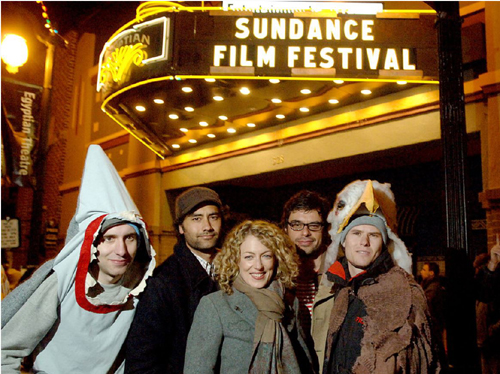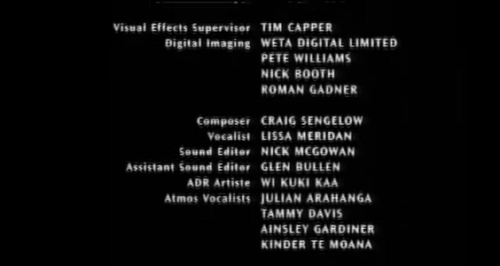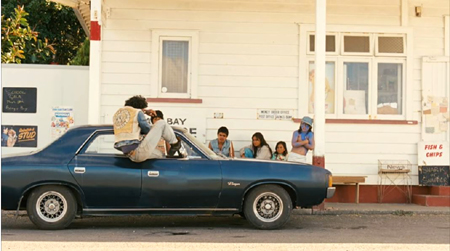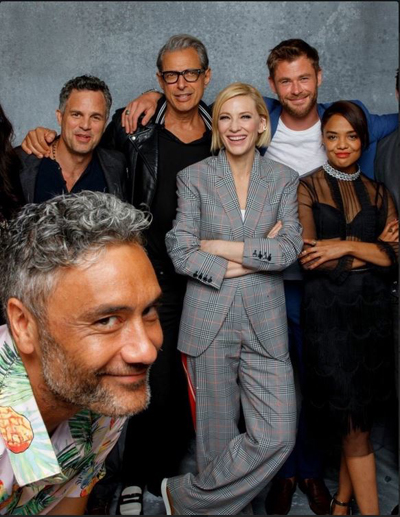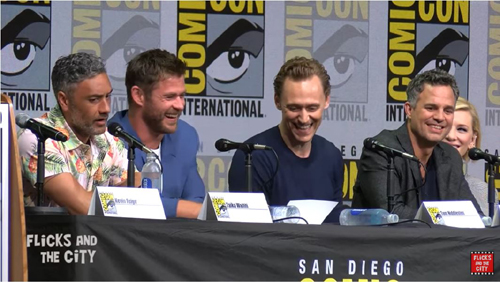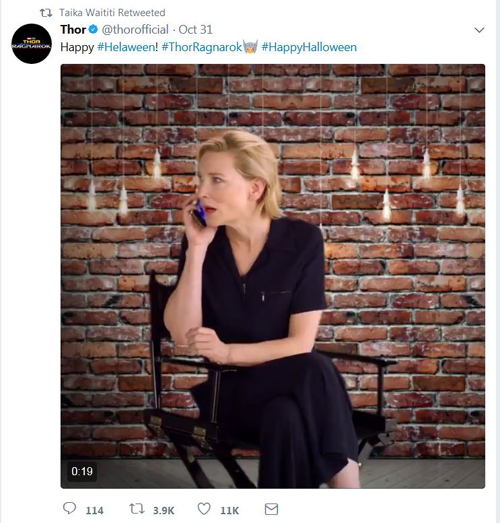Archive for the 'Hollywood: The business' Category
Geoffrey O’Brien reviews REINVENTING HOLLYWOOD in NYRB
Backfire (1950).
DB here:
The New York Review of Books has just published a review by Geoffrey O’Brien of Reinventing Hollywood: How 1940s Filmmakers Changed Movie Storytelling. This is a big deal for me.
I never thought my work would be reviewed in a publication I’ve subscribed to since my college days. And to be reviewed by O’Brien is a special honor. He’s one of those wide-ranging intellectuals who are rare today. He writes fiction and poetry, and offers criticism of film, literature, music, painting, and theatre. He’s ideally equipped to appraise my arguments about how 40s cinema drew on narrative conventions in adjacent arts. He’s also a connoisseur of the obscure and marginal in classic studio cinema.
I especially admire his writings on noir film and literature, on popular music, and his study of American cinema as a sort of popular hallucination. The Phantom Empire makes this case memorably, but the opening of his review catches the flavor too.
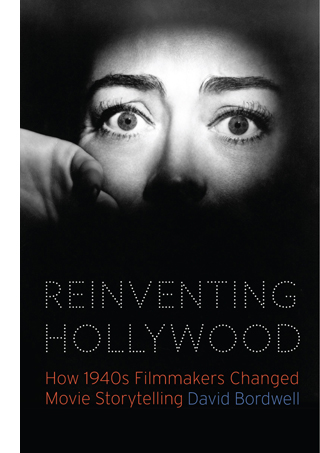 One night not long ago I found myself once again drawn into a movie from the tail end of the 1940s. This one, with the thoroughly generic title Backfire (not to be confused with Crossfire or Criss Cross or Backlash ), did not come with a high pedigree. It had sat on the shelf for two years after it was filmed in 1948, and afterward seems to have faded quickly from recollection. But movies of that time, when they emerge decades later, have devious ways of holding the attention: beguiling hooks and feints lead deeper into a maze whose inner reaches remain tantalizing no matter how many times those well-worn pathways have been explored, and no matter how many times the interior of the maze has led only to an empty space.
One night not long ago I found myself once again drawn into a movie from the tail end of the 1940s. This one, with the thoroughly generic title Backfire (not to be confused with Crossfire or Criss Cross or Backlash ), did not come with a high pedigree. It had sat on the shelf for two years after it was filmed in 1948, and afterward seems to have faded quickly from recollection. But movies of that time, when they emerge decades later, have devious ways of holding the attention: beguiling hooks and feints lead deeper into a maze whose inner reaches remain tantalizing no matter how many times those well-worn pathways have been explored, and no matter how many times the interior of the maze has led only to an empty space.
In a state of suspended fascination only just distinguishable from the preliminary stages of dreaming, I remained absorbed as documentary-style scenes of wounded war veterans recuperating at a hospital in Van Nuys, California, gave way to progressively more disjointed and often barely comprehensible episodes: an unidentified woman creeping in the dark into a patient’s room with a message about a missing war buddy, a murder investigation, a cleaning woman peering through a keyhole in a fleabag Los Angeles hotel, a winding path from mortuary to boxing arena to gambling den to the office of a particularly corrupt doctor, a plaintive piano theme playing over and over accompanied by reminiscences of its origin in a far-off Austrian village. The story splintered into flashbacks, spiraling into deepening confusions of identity and chronology, punctuated, as if to keep the spectator awake, by a series of point-blank shootings.
All the while, the dialogue was evoking the trauma of wartime injury, questioning the difference between memory and hallucination, talking about nightclub rackets, tax evasion, gambling debts, obsessive love, as the narrative coiled in its final swerve toward a strangling, silhouetted on a bedroom wall while Christmas carols were sung in the background. And then, abruptly, the nightmare was over, we were back in the veterans’ hospital after a second and successful round of rehabilitation, and the three surviving principal characters were even managing to laugh as they took off in their jeep for Happy Valley Ranch. By then I could hardly have said what the movie was about or even if it was especially good—few viewers have ever thought so—yet could not deny that something had caught me in its grip and stirred up troubling associations, like partially retrieved memories of a parallel life.
Apart from wishing I could write like this, I find myself agreeing. Popular culture does offer us a phantasmagoric alternative world that we can drift through in an almost somnambulistic way. I don’t see this argument as the sort of Zeitgeisty criticism I’ve complained about elsewhere. Rather, I think it’s in the spirit of Parker Tyler, who saw Hollywood not as reflecting a collective psyche but as building occasionally rickety story worlds out of cultural flotsam scavenged from wherever. Not a mirror but a mirage.
That hallucination demands that conventions and schemas, norms and forms, bring order to an occasionally demotic array of materials. Given this orientation, the sort of analysis I float in Reinventing Hollywood might seem to be overthought and flat-footed. But O’Brien gets into both the book’s research assumptions and its ambitions. He sees that I was trying to figure out how the dépaysment of Forties cinema stems from the frantic pressures of the industry, ambitious filmmakers itching to explore unusual narrative strategies, and the jolts that occur when time schemes collide, motives get muddled, and story premises wriggle out of control. To savor eccentricities, you need the sense of a center, and that’s where my inquiry starts.
It’s a generous review. O’Brien makes my arguments crisp and cogent, and he adds ideas of his own. It’s a review that both fans and nonspecialists can learn from, as I did. It’s also good to know that some of my jokes didn’t fall flat. (I can hear readers asking: Wait, there were jokes?)
For more on Reinventing Hollywood, go to the tag 1940s Hollywood. The book is available from the University of Chicago Press website and the mighty Amazon. As ever, I owe thanks to the University of Chicago Press staff, particularly Rodney Powell, Kelly Finefrock-Creed, Levi Stahl, and Melinda Kennedy.
I discuss Parker Tyler’s conception of the Hollywood Hallucination in The Rhapsodes: How 1940s Critics Changed American Film Culture.
New colors to sing: Damien Chazelle on films and filmmaking
La La Land.
DB here:
Between the end of principal photography on First Man and the start of post-production, Damien Chazelle squeezed in a visit to the UW–Madison. We’re very glad he did. A hell of a time was had by all.
His visit culminated a Cinematheque series devoted to his work. On Friday 23 February we picked him up at O’H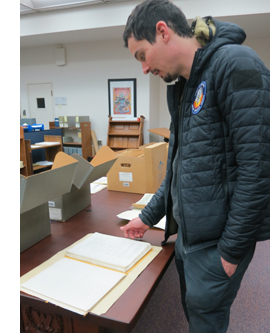 are and had a fine ride back talking about film and less important things. Then he visited our archives at the Wisconsin Center for Film and Theater Research; on the right, he examines an original Final Revised script of Citizen Kane.
are and had a fine ride back talking about film and less important things. Then he visited our archives at the Wisconsin Center for Film and Theater Research; on the right, he examines an original Final Revised script of Citizen Kane.
After that, he sat down for a conversation about his career with a hundred or so students. At a quick dinner, he and our Cinematheque impresario Jim Healy gave dueling impersonations of Michael Gazzo as Frankie Pentangeli. Damien then plunged into a long Q & A with a full house who had just seen La La Land in 35mm.
Next morning he met with Criterionistas Kim Hendrickson and Grant Delin for a FilmStruck segment. Then, in a discussion with Kelley Conway, he introduced a string of films he curated for the Cinematheque. But he wasn’t off the hook, because driving back to O’Hare with Kelley and Jeff Smith, he was immersed in more film talk.
Damien proved himself the ultimate guest—friendly and generous, enthusiastic and excited, free of airs and snark. We learned a lot from him. Herewith, a sample.
A Direct-Cinema musical
Guy and Madeline on a Park Bench.
Although he considered a musical career, film was Damien’s first love. He wrote scripts in middle school, transcribed movie dialogue from VHS tapes, and as an undergrad watched films in Harvard’s magnificent archive. The film program there, with leaders like Alfred Guzzetti and Ross McAlwee, stressed documentary and experimental film, and the exposure stuck. Among the films Damien curated for our Cinematheque show were the Rouch-Morin investigation Chronicle of a Summer and Su Friedrich’s Sink or Swim.
No surprise, then, that his first feature, Guy and Madeline on a Park Bench, was shot in a Direct Cinema mode. It’s got light leaks and run-and-gun footage, complete with bumpy handheld pans and zooms. To get around problems of inexperienced actors, Damien told some of them that it was a documentary. The 16mm project was produced over three years; sometimes the exposed films sat in the lab while Damien drummed up donations from friends, family, and strangers. (Writing blind to Harvard alums, Damien got a donation from John Lithgow.) When a processing accident ruined some footage, Damien’s producer talked the lab into free work for a time.
Guy and Madeline cuts among three characters: trumpeter Guy, his ex-girlfriend Madeline, and his new girlfriend Ilena. Like a Nouvelle Vague film, it relies on chance encounters. Madeline is emotionally wrenched by the breakup with Guy, and we follow her efforts to find work and a new partner. Ilena’s semi-reluctant meeting with an older man who brings her home to meet his daughter reminded me of the moment in Shoot the Piano Player when Charlie, running from the thugs, falls into step beside a stranger who tells him his own troubles. And of course the title characters recall the separated lovers of The Umbrellas of Cherbourg.
For all its documentary textures, the film at times becomes what J. Hoberman called a Mumblecore musical. But there’s a gradual shift to the full-blown show-biz mode. Damien talked of the thrilling moment in Hollywood musicals when realistic presentation of a scene gives way to nondiegetic music and the characters leap to a new, more ethereal level. Guy and Madeline presents this transition in gradual doses.
At first, the numbers are motivated realistically. Guy, an African American, plays trumpet with a jazz ensemble, so we get scenes of their performance at a local hangout. We move a bit further toward stylization with a party sequence that induces some talented kids to indulge in singing and tap-dancing among their friends—captured in casually imperfect framings.
The transition to pure musical fantasy comes forward after the breakup in a solo number, with Madeline singing a soliloquy as she wanders in the park. There’s no sense of an audience; this is a private reverie. (A whiff of this tune, heard on a car radio, makes its way into La La Land‘s opening shot.)
When Madeline takes up work at a diner, the components come together in an all-out production number addressed to us.
In an echo of Bande à part’s “Madison” sequence (lucky name), shooting a dance number in cinéma-vérité mode brings out an intriguing friction. It’s the same kind of productive clash we get on the soundtrack, between Justin Hurwitz’s shimmering Legrand-inflected score and varieties of jazz (Dixieland, Guy’s cool composition for Madeline). And like Nouvelle Vague characters, these people are devoted to books, the arts, and self-exploration.
As a “staged documentary” Chazelle’s film parallels Chronicle of a Summer in an intriguing way. That film starts as pure Direct Cinema, with investigators stopping people on the street to ask them questions. But as we get to know the group the film concentrates on, there’s a lot more control and “fictionalization.” There are precise matches on action, for instance, with camera ubiquity indicating careful restaging.
This rigging doesn’t damage the film as a document of summer 1960. Damien learned from it that you can make a truthful movie by “creating a situation with less and less acting to do.” Given this hybrid quality, Chronicle of a Summer becomes a vivid example of a moment when a film mode is “figuring itself out.” Its self-conscious artifice, which includes participants watching themselves during a screening, was foundational for the New Wave. “You watch a language being born.” That language was also political, as Damien pointed out: The film summons up memories of the Holocaust and glimpses of the Algerian war.
In other respects, Damien’s first film looks forward to La La Land thematically and formally. Guy and Madeline starts with the moment of the couple’s breakup (on the bench) and flashes back to vignettes of their love affair before returning to the bench. This opening loop is like the one that jumps from Mia’s night out back to the traffic jam and then follows Sebastian. A large stretch of each film’s plot is about how the couple’s lives converge and diverge.
Similarly, when the signature tune “I Left My Heart in Cincinnati” is played, shots of Madeline and Guy frame a flashback to the combo’s earlier performance, as if they’re sharing the memory. Something similar happens at the climax of La La Land, in what seems to be a mutual vision of Sebastian and Mia’s alternative future. As often happens in Chazelle’s cinema, epiphanies burst out in moments of musical performance.
Blood, sweat, and tears on the drumhead
Grand Piano.
Despite playing many festivals and winning critical praise, Guy and Madeline didn’t open any doors in Hollywood. Damien picked up odd jobs, not all film-related, while writing commercial genre screenplays. He sold a kidnapping script (not made) and Grand Piano (2013), skillfully directed by Eugenio Mira. He began getting assignments like The Last Exorcism Part II (2013) and he contributed to the screenplay for what became 10 Cloverfield Lane (2017), released long after he’d worked on it.
I found Grand Piano pretty impressive on the big screen. Chazelle’s script and Mira’s direction create a solid thriller built around the situation Hitchcock designed for his versions of The Man Who Knew Too Much. Most of the action takes place during a concert celebrating the return of a traumatized pianist to the stage. As he’s about to start the program, a sniper uses cellphone messages and scribbles on the score to demand a perfect performance of the florid piece that spooked the pianist years before.
At first restricted to the pianist, the film’s viewpoint widens gradually to include others, and soon crosscutting builds tension. The tormenting voice (“Play one wrong note and you die”) calls to mind the music teacher in Whiplash. As in a classic thriller, the climax arrives when the victim must fight back. And as in Whiplash, the performer wins using the only weapon he has: nearly crazed virtuosity.
Damien now thinks that the long germination of the scripts for Whiplash and La La Land made them better. As financing kept falling through, the films gained more layers. Whiplash (2014) found a home first, with Blumhouse producing and helping with the financing. It was their idea to shoot a scene to show investors (we screened it in our series), and the project found financing at Bold Films.
Given a $3 million budget and a 20-day schedule, Whiplash demanded meticulous storyboarding and very little coverage. Like Hitchcock and Leone, Damien shot only what he needed. He used two cameras for the rehearsal scenes and three for the climactic concert. The cuts and camera moves were planned to coincide with measures of the music.
Damien calls Whiplash a film about music (the same could apply to Grand Piano). It owes a lot to the sports-film genre as well; Damien envisioned its punishing force as indebted to Raging Bull. He turns big-band drumming into blunt-force trauma, with gory drumheads and cymbals. Sam Fuller would have approved.
Like Guy and Madeline and Grand Piano, Whiplash culminates in a musical performance that carries a powerful emotional impact. No wonder that as a kid Chazelle studied one-reel movies of classic drummers, then started to think of the shorts as films in their own right. In this spirit he curated for us two Dudley Murphy shorts, St. Louis Blues (1929, with Bessie Smith) and Black & Tan (1929, with Duke Ellington), along with the 1954 documentary Jazz Dance, a night on the town that explodes with pure human happiness. In all these, music-making is pushed to the edge of ecstasy.
This time around with Whiplash (good name for a movie about sadomasochistic musicians), I noticed its straightforward classical construction. Damien says that he learned screenplay construction after moving to LA. Its tale of a boy caught between a good but weak father and a punishing, strong one gains strength and sharpness from its traditional four-part plot.
At the crucial 25-minute mark, Fletcher wins Andrew’s trust. Four minutes later, in the performance of “Whiplash,” Fletcher is bellowing and Andrew is sobbing. First reversal noted. The second part, the Complicating Action, interweaves Andrew’s romance with Nicole, his persistence in drumming, and his fraught relation with his family. This part culminates at the midpoint with Fletcher’s giving Andrew a new rival, which impels Andrew to break up with Nicole. In the Development section, Andrew suffers more setbacks. A harrowing car accident leads him to botch a major competition and assault Fletcher. He leaves school, accuses Fletcher of abuse, and abandons drumming.
After he discovers Fletcher playing piano in a club, he agrees to join his new combo, which preciptates the climax: a competition performance at which Andrew, realizing that Fletcher is out for revenge, seizes control. The result is another burst of barely controlled frenzy, complete with unmotivated bursts of light spattering Andrew in the last shot.
Whiplash is a film without pity. Andrew’s rejection of Nicole suggests that he’s become obsessive, and after his scuffle with Fletcher he’s drained and numb. And no sympathy is extended to the monstrous Fletcher. Damien avoided what he called the “rubber ducky” moment that shows this man to be damaged by some childhood trauma. We get no explanation of his ruthless brutality; he’s simply a force to be fled or fought. (Damien told us that he modeled Fletcher on a music teacher he’d had; the original probably wasn’t as nasty, but Damien wanted the film to convey how frightening he was to a fifteen-year-old.)
At the end, Andrew earns a glint of triumph, but the reverse shot shrewdly withholds from us the expression that might warm us up to this man. His sliced-off smile and slight nod are all it takes for Andrew to react.
Still, his grudging approval means that Andrew has won over one scary dad.
Embarrassing yourself and your characters
At 29, Chazelle found himself with a hit, confirming the Magic Number 30 Rule. Whiplash made a splash at the Sundance Film Festival and went on to be nominated for several Oscars, winning three. It also brought in a lot more than its cost. Damien could now reignite La La Land.
Lionsgate, via Summit, picked it up and production began. There were 40 days of shooting across 65 locations. The production was able to be so efficient because of careful planning and the reliance on long takes. “The long take has become fashionable,” Damien says, who knows his film history: “But it’s actually the most old-fashioned kind of thing.” Whiplash is an editing-driven movie, but La La Land relies on many fewer shots. The moments of shot/reverse shot–notably in the spoiled dinner when Sebastian is briefly between tour gigs–gain a prominence they don’t have in most movies.
In shooting, the morning was given over to rehearsals, followed by a great many takes–often required to sync the actors to playback. Around about take twelve, Damien recalls, things started to crystallize, but sometimes as many as twenty takes were needed. While Whiplash stayed tight to the screenplay, La La Land was heavily improvised. The visuals were pre-designed, but the relationship at the center needed a casual feel, as if the characters were tossing off their lines.
Damien had thought he would simply be able to cut together the “one-ers,” but editing took five months, not least because he and his long-time editor Tom Cross played with many versions. Every number was a candidate for deletion, including the freeway opening. (Yeah, I shuddered.) There was also some digital adjustment of the 35mm original. David Koepp wrote me:
Maybe ask Chazelle about how beautifully he used color to direct our eye in his LA LA LAND opening. Always the right burst of costume color directing us to the right spot at the right time… although I guess that’s more of a compliment than a question.
Damien explained that he made those colors pop a bit more by digitally toning down other costumes in that intricate opening sequence.
La La Land has steadily grown in my regard and affection; I think it’s one of the best recent American movies. Just the title gets you going. “La la” suggests music, but also the self-absorption of jamming your ears lalalala. LA is a town of airheads, but it can become a town of worthwhile fantasy too. Damien spoke of most movies trying to make fake sets look real; he wanted to “take real stuff and make it look false.”
This time around, I was struck by the film’s harsh side. It’s pretty hard on mainstream Hollywood, from the smug partygoer who says he’s really good at world-building to Mia’s superficial roommates. Their anthem “Someone in the Crowd” is about careerism, but it becomes for her about the search for a soulmate.
Then there’s Sebastian. A lot of Hollywood plots work only if the guy is a jerk. In Whiplash, Andrew turns smug when he thinks he’s Fletcher’s pet, and he dumps Nicole heartlessly. (He’s becoming a bit like Fletcher.) In La La Land, I began to see Sebastian as a stubborn nerd, refusing to play the cocktail-bar set list and ranting about jazz to anyone who’ll listen. Ryan Gosling’s ingratiating performance makes this nerd more likable, but as written the character is pretty arrogant.
One scene that puzzled me now makes sense in a larger pattern of Seb’s obtuse, evasive behavior. After he learns he may be kept from attending Mia’s show, why doesn’t he phone her? We see him brooding outside the music studio.
He may think he can still make it in time, which would reflect his somewhat risky self-assurance. But Damien pointed out that elsewhere in the film he’s not seen using a cellphone, or for that matter a computer. Old school as he is, he seems wary of modern technology. He drives an utterly impractical Buick convertible. He plays cassette tapes and LPs and his apartment’s phone is an old-style handset, antenna and all. An omitted screenplay scene showed him in a movie audience ranting at somebody using a phone, thereby disturbing the viewers more than the caller has.
I’m being too hard on Sebastian, of course. We admire his idealism, his tenacity, and his romantic attachment to what he thinks is the best of the past. Still, Damien has remarked that he sees sides of himself in both Andrew and Sebastian, which reminds us that “commercial” films can also be personal ones. For him, the strongest creative choices risk exposing you. “If you’re not embarrassing yourself, you’re not doing your job.”
If Sebastian is too willful, Mia is too eager and desperate. “I can do it differently,” she tells the audition staff after they’ve brushed her off. Sebastian and Mia complement each other. His cockiness (“Fuck ’em”) pushes her to mount her one-woman show, while she tries to steer him back to his basic commitments. The larger theme seems to me that the most vital art comes from yourself, be it your memory of a Francophile aunt or your irrational attachment to classic jazz. Instead of having to fit into prefab TV characters, Mia gets her breakout role in a film that will build its script around her personality.
Damien spoke of the musical as Hollywood’s most avant-garde genre. That partly stems from the transition from realism to fantasy that launches a number. This shift provides the film’s final turning point, with Mia’s audition; for once a Chazelle film makes its musical climax a subdued one, but it’s no less a demonstration of the performer’s authentic emotion. Art’s power comes from novelty (“new colors to sing”) grounded in sincerity and self-awareness, even if by some standards it seems awkward and geekish.
The avant-garde overtones are also a matter of how musicals make real locations look unreal—as Demy films memorably show. So it was uncannily appropriate that Damien asked us to introduce La La Land with Bruce Baillie’s All My Life (1966). A slow pan left across a fence and flowers gives way to a diagonal tilt up to the sky; the whole accompanied by Ella Fitzgerald and Teddy Wilson.
La La Land might well be a sequel, as we tilt down from another blue sky to a gridlocked freeway.
As Baillie turns a prosaic bush and fence into an audiovisual flow, so the opening of Chazelle’s film takes the banality of a traffic jam and makes it an explosion of youthful hope and energy, complete with somersaults.
The sheer cinematic exuberance of La La Land will, I think, keep the film alive for a long time. “Every scene, a new idea”: Damien quoted Arnaud Desplechin quoting Truffaut. Many parts of La La Land put nifty tweaks on the conventions of comedy, drama, and the musical. There’s the “enacted” slow-mo at the party, the iris around a kiss, and the montage rendered as a flash-forward from a duet at the piano (“City of Stars”). There’s often a tweak on what might have been perfunctory filler. The exit-on-an-elevator shot is lit and costumed so as to (a) suggest the conformity of the dress code for an audition; (b) emphasize the height of her rivals; and (c) accentuate the spill on the less glamorous Mia’s blouse. Her disadvantages are diagrammed.
Then there’s the idea of having a “real” dream ballet at the planetarium and a virtual one at the end. Speaking of the end, I especially liked the head-fake at the start of the present-time part. By showing Mia on the Warners lot and Sebastian in his club, we’re invited to infer for a moment that they stayed a couple, before revealing that she’s actually married to an easygoing beefcake and Seb still lives alone.
Pitching La La Land, Damien found that many producers insisted that the couple unite for a happy ending. Damien objected that many of the great romantic films, including Casablanca, A Star Is Born, and Gone with the Wind, center on lost love. Still, he found a way to a happy ending by offering an alternative outcome that many viewers will prefer.
True, it’s sad. But Jacques Demy once remarked that sad movies make him happy. For me, La La Land is that sort of movie.
How much does cinephilia help a director? I’d expected Damien to recommend the sort of movie immersion he had as a kid. And he admitted the power of the past. “I can’t unwatch the movies I’ve seen.” But some great directors aren’t cinephiles, he granted. He cited Bresson and Dreyer; I thought of Ford. What’s important, he suggested, is a relation to some, any art form–if not film, then visual arts or theatre or literature.
Maybe the best of both worlds is to be a young filmmaker who knows both film and another medium, such as music, and thinks as an audiovisual artist. Damnien remarked that in writing he starts with images rather than words but then lets the dialogue focus the scene. Interestingly, Eisenstein taught his students to stage a scene first as if it were in a silent film, then revise it with music, color, and (only then) dialogue. That assured that pictorial storytelling would be foremost.
Kristin and I were gratified to hear that Damien has over the years read several things we’ve written. In turn, he taught us a lot. His visit reminded me that one path to filmmaking achievement is just thinking about your craft and your choices, in light of your life experiences and your encounters with powerful art. He passed that lesson along to the hundreds of people who came to learn from him.
Thanks to Damien Chazelle and Alissa Goldberg for making the visit possible. Thanks as well to J. J. Murphy, Mike King, Ben Reiser, Matt St. John, Mary Huelsbeck, Amy Sloper, Maria Belodubrovskaya, Erik Gunneson, Jason Quist, Kim Hendrickson, and Grant Delin. Event planners Kelley Conway, Jeff Smith, and above all Jim Healy, Cinematheque Director, deserve massive gratitude as well.
We have other discussion of La La Land on this site: my search for some of its roots in 1940s innovations, and my analysis of its song plot. There’s also a wide-ranging conversation among experts Kelley Conway, Eric Dienstfrey, and Amanda McQueen. Jeff Smith weighed in on the film’s score, correctly predicting its Oscar triumph.
P.S. 8 March 2018: Many thanks to Steve Elworth for a correction about All My Life.
Kelley Conway interviews Damien Chazelle.
Who got played? A guest post by Jeff Smith on THE PLAYER
The Player (1992).
Jeff Smith, our collaborator on Film Art: An Introduction just recorded an installment of our Observations on Film Art series for the Criterion Channel on FilmStruck. Here’s a supplement to that. –DB
In my installment, focusing on genre play in The Player, I discuss Robert Altman’s film in relation to two important traditions in Hollywood cinema: crime thrillers and films about filmmaking. As anyone who knows Altman’s other films would expect, The Player toys with the conventions of both genres in a number of different ways.
As I note in the video, The Player was received as something of a comeback film for Altman. It augured a resurgence in the director’s career that ultimately produced such late masterpieces as Short Cuts and Gosford Park.
Today, I sketch out some additional ideas about The Player’s use of genre conventions. I hope to shed light on some other connections to the crime thriller that I didn’t discuss in the video. I also hope to show just how unusual the film is in this context. Spoilers ahead, not only for The Player but for the novel and film of The Ax.
Will the real Griffin Mill please stand up?
In Reinventing Hollywood, David notes that there are usually four sorts of characters involved in a crime thriller plot: victims, lawbreakers, forces of justice, and more or less innocent bystanders. Filmmakers customarily organize the film’s narration around one or more of these character roles. Typically, a cascade of further choices flows from this initial decision about whose perspective forms the focal point of the story.
In The Player, much of the narration is restricted to the knowledge of the protagonist, Griffin Mill. The film includes a few scenes where Griffin is not present, like the one where the studio’s management awaits his arrival at a meeting. That, in itself, is not unusual. Many thrillers, like Chinatown or The Ghost Writer, employ similar tactics. What is slightly unusual is the fact Griffin takes on two of the typical character roles in the crime thriller as both victim and lawbreaker.
Griffin is a suit, and as a studio functionary he doesn’t immediately engender audience sympathy. Our first glimpse of Griffin shows him listening to pitch sessions. His questions to the people proposing new film projects are glib and capricious, representing the worst aspects of Hollywood commercialism.
Yet The Player does marshall some sympathy for Griffin as the victim of a stalker. Every time Griffin finds a postcard in his mail or on his car, it reminds us that he might be in mortal danger. After the stalker plants a venomous rattlesnake in Griffin’s passenger seat, we can’t believe the threats are empty.
Any sympathy that Griffin garners as a result of this psychological warfare is mollified, though, when the victim becomes victimizer. As Griffin later explains to June, his job is to tell people “no” more than a thousand times each year. Griffin believes that one of these rejections is the reason for the threatening postcards he receives. But he tragically miscalculates in targeting aspiring screenwriter David Kahane as the likely suspect.
Griffin contrives a meeting with Kahane at a Pasadena movie theater, and having bumped into him, tries to make amends. Yet Kahane recognizes that he is being pimped. This leads to a shouting match in a parking lot with Kahane threatening to ruin Griffin’s reputation. And when Kahane accidentally knocks Griffin over with his car door, Griffin reacts with rage, grabbing the screenwriter’s head and banging it repeatedly against the lot’s concrete surface. Although it seems clear that Griffin was acting on impulse, he’s nonetheless crossed a line that separates victims from perpetrators.
More importantly, Griffin’s violent action complicates the viewer’s allegiance to him. Altman establishes a dramatic context in which the motivations for Griffin’s crime seem completely understandable. Yet whatever sympathies viewers might have for Griffin are muddled by his creepy romantic interest in Kahane’s girlfriend; his cruel treatment of Bonnie, his current partner; and the general smarminess he exudes as a successful but shallow executive. Crime thrillers often ask audiences to sympathize with heels. There’s nothing that Griffin does that is inherently evil, but there’s nothing to really like. It’s less about his crime and more about his slime.
Griffin’s passage from victim to lawbreaker also alters the typical thriller plot. At the start of the film, Griffin himself functions as the investigative agent, trying desperately to figure out who is threatening him. Once Griffin becomes a suspect himself, though, that line of action halts, and the Pasadena police’s investigation of Kahane’s death springs up in its place.
This shift in the direction of the plot doesn’t really change the film’s pattern of narration. We remain as ignorant of the police’s activities as Griffin is. What does change are the stakes of the narrative. Instead of eliciting curiosity and suspense about Griffin’s stalker, we now wonder whether he’ll ever be brought to justice for Kahane’s death. Despite its strong connections and frequent allusions to crime fiction, The Player is not so much a whodunit as it is a will-he-get-away-with-it.
They smile in your face, all the time they want to take your place….
Besides blurring the boundaries between Griffin’s role as both victim and lawbreaker, The Player falls into a specific subgenre of crime fiction: the corporate thriller. Since, the corporate thriller is mostly defined by its setting, it blends pretty easily with the typical thriller plots and characters.
Like the spy thriller, the corporate thriller can focus on protagonists engaged in industrial espionage, as we see in Duplicity, Demon Lover, or Paycheck. Christopher Nolan’s Inception blends the plot mechanics of these corporate espionage thrillers with science fiction tropes to provide a narrative frame, but then embeds elements of the heist film within it.
Like the political thriller, the corporate thriller might also focus on the backroom deals and machinations that enable the protagonist to move up the company ladder. A film like Disclosure is a paradigm case. But even romantic comedies or prestige dramas can borrow elements from it. (Think Working Girl and Glengarry Glen Ross.)
More commonly, though, corporate thrillers feature elements drawn from the crime thriller. The roots of this approach to the genre stretch back a long way and can be found in both literary and cinematic antecedents. Some plots, for example, follow investigations that expose corporate malfeasance. Others focus on murders committed within a corporate environment, as in Dorothy Sayers’s novel Murder Must Advertise and Kenneth Fearing’s novel (and film) The Big Clock and in more modern instances like Michael Crichton’s Rising Sun and John Grisham’s The Firm. Other corporate crime thrillers, like Bret Easton Ellis’s American Psycho (below) and Cindy Sherman’s Office Killer, involve serial murders in white-collar environments.
The corporate crime thriller enables writers and filmmakers to explore thematic parallels between the acts of brutality and violence committed by individuals and the cutthroat tactics employed by business institutions. The plots of many gangster films center on rival mobs battling for competitive dominance in black market trades. Such conflicts often seem like a logical extension of the laissez-faire principles that undergird capitalism. Corporate crime thrillers tread similar thematic territory. They sometimes suggest that the personality traits that make for good business executives and titans of industry are the same ones that produce sociopaths and serial killers.
The Player presents the familiar corporate-thriller rivalry, as Griffin works behind the scenes to outmaneuver Larry Levy. For example, Griffin momentarily ponders using Larry’s admission that he attends Alcoholics Anonymous meetings as a way of embarrassing him within the company. Larry quickly undercuts this strategy, though, when he states that he just goes to the meetings because they are a great place to network.
Even more telling is Griffin’s efforts to saddle Larry with a loser project, Habeas Corpus. Midway through The Player, Griffin makes a deal with Andy Civella and Tom Oakley at a Los Angeles restaurant. The next day, he convinces his boss to greenlight the project with Larry as producer, knowing that Tom will likely prove difficult to work with and that his plan to use unknown actors has disaster written all over it. Larry, though, has the last laugh when we get a sneak peek of Habeas Corpus at film’s end. Not only does it have big stars in Julia Roberts and Bruce Willis. It also has the kind of happy ending that the pretentious Tom claimed was too Hollywood when he pitched the project. It turns out Tom cares more about the results of preview screenings than he does the purity of his artistic vision.
Not surprisingly, Altman doesn’t give us a wholly straightforward version of the corporate thriller. In a reflexive and ironic touch, Griffin’s successful ascent to studio boss seems to be secured by the same mysterious stalker who’d been taunting him at the start of the film. In a phone call, the stalker pitches Griffin the plot of the film we’ve just been watching, using his knowledge of Griffin’s crime to leverage his project into development. Here we see Altman slightly reframing the genre’s thesis about the relationship between crime and business. Griffin’s pact with his blackmailing stalker is simply a mildly illicit version of the sorts of quid pro quo arrangements upon which thousands of business deals are made.
If Griffin’s efforts to forestall a rival evoke the political thriller, then his killing of screenwriter David Kahane connects The Player to the corporate crime thriller. Once again, Altman deviates from some of the conventions. The crime doesn’t take place inside a corporate setting, as in Rising Sun and Murder Must Advertise. Griffin kills Kahane in the very public space of a Pasadena parking lot, with film noir overtones.
Similarly, Griffin’s victim is not a colleague, co-worker, subordinate, or client. Rather, Kahane is someone with whom Griffin has had minimal contact, a name plucked almost randomly from a directory of screenwriters in order to jog Griffin’s memory. Consequently, Griffin’s motives for confronting Kahane seem quite different from the culprits in other corporate crime thrillers. More often than not, the murderers in these other stories fear job loss or try to silence others in an effort to cover up some smaller crime or bungled action. Griffin’s actions with Kahane spring from fear about threats to his physical well-being, not from threats to his continued employment. (The latter is Larry’s role.)
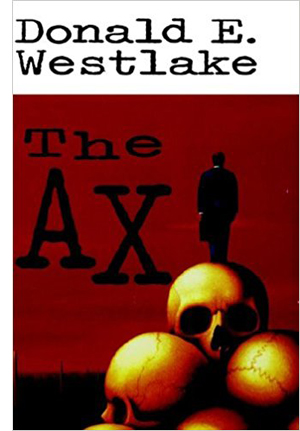 Some of The Player’s deviations from more conventional corporate crime thrillers come into relief if we compare it to Donald Westlake’s novel The Ax, a purer example of the genre. The Ax tells the story of Burke Devore, a production line manager recently downsized out of his job at a paper company. Still unemployed after eighteen months, Burke creates a phony job advertisement, and then begins to kill off the seven applicants he believes have the same qualifications he does. His plan is to eliminate all of the other unemployed middle managers in the paper business so that his resumé will land at the top of the pile when a new factory opens in his area.
Some of The Player’s deviations from more conventional corporate crime thrillers come into relief if we compare it to Donald Westlake’s novel The Ax, a purer example of the genre. The Ax tells the story of Burke Devore, a production line manager recently downsized out of his job at a paper company. Still unemployed after eighteen months, Burke creates a phony job advertisement, and then begins to kill off the seven applicants he believes have the same qualifications he does. His plan is to eliminate all of the other unemployed middle managers in the paper business so that his resumé will land at the top of the pile when a new factory opens in his area.
Like Altman, Westlake has some fun with his central conceit. Just as The Player includes faux film clips and rushes as a means of satirizing Hollywood production practices, The Ax incorporates fictional resumes that tweak jobseekers’ business-speak. What makes Westlake’s social criticism in The Ax so resonant, though, is the utter banality of Burke’s ambitions. He doesn’t aspire to the garish lifestyle we see displayed by Tony Montana or Jordan Belfort in Scarface and The Wolf of Wall Street respectively. Instead Burke just wants to return to his modest middle-class lifestyle and to the dignity that a decent job afforded him. Serial murder just seems like the simplest way to achieve that.
As this comparison suggests, one of the things that makes The Player somewhat unusual as a corporate crime thriller is its play with character motivation and point of view. Facing threats and intimidation, Griffin looks more like the target of a crime than a perpetrator. In corporate thrillers, the lawbreaker is more likely to be somewhere in the middle of the corporate ladder, like Burke, than at the top of it. Moreover, although his actions are motivated by a strange combination of both vanity and insecurity, Griffin more or less stumbles into the crime he commits rather than coolly plotting it the way Burke does.
Despite these differences, The Player and The Ax share an important feature that markedly deviates from the crime thriller as a whole. Both Griffin and Burke get away with it. The plots of most crime thrillers resolve in ways that balance the scales of justice. The bad guys are usually either arrested or killed after climactic confrontations with law enforcement. But this doesn’t always happen. Burke, Patrick Bateman in American Psycho, and Dorine in Office Killer escape punishment. Even though Jordan Belfort is arrested in The Wolf of Wall Street, he gets a slap on the wrist for his crimes.
Perhaps this aspect of the corporate crime thriller reflects the cynicism and amorality that pervades the genre. After all, if your belief is that most corporations get away with murder in a figurative sense, then it’s not hard to accept this idea when it occurs in fictional contexts in a literal sense.
Still, in the case of The Player, the Pasadena police’s failure to prove their case against Griffin Mill may reflect a meshing of both authorial and generic tendencies. When Griffin embraces June in the stylized happy ending of The Player, it quite deliberately parallels the tacked on happy ending of Habeas Corpus we’ve seen just moments earlier. The dialogue Griffin exchanges with June amplifies the similarity between these scenes. When June asks, “What took you so long?”, Griffin responds, “Traffic was a bitch.” These are the exact same lines exchanged by Julia Roberts and Bruce Willis in Habeas Corpus. By allowing Griffin to get away with it, The Player’s “up” ending sharpens Altman’s critique of Hollywood convention, and allows him to subvert the kinds of mainstream genre filmmaking he’s long detested.
Both allusive and elusive: Comparing The Player to Hollywood Story
One of the other topics I discuss in my video essay on The Player is the way the film pays homage to various aspects of Hollywood tradition. Much of this is bound up with its satire of commercial filmmaking. But it also strengthens the film’s relation to the crime thriller. Throughout The Player, Altman makes reference to Hollywood’s past in multiple ways. Celebrity cameos, film posters, and production stills populate the mise-en-scene. The characters also frequently mention older film titles in dialogue.
Perhaps the most interesting allusion in The Player involves a poster of Hollywood Story that hangs in Griffin’s office. The latter is a 1951 film noir directed by William Castle, who later became famous for his use of outrageous gimmicks in the production and promotion of horror films. For The Tingler, Castle supervised the installation of devices that would vibrate theater seats, anticipating today’s 4DX Theater Experience in places like Los Angeles, New York, Seattle, and Orlando.
Hollywood Story dramatizes the efforts of film producer Larry O’Brien to develop a project around the unsolved murder of silent film director Franklin Ferrara. O’Brien hires one of Ferrara’s old scenarists to write the script. He also develops a close relationship with Sally Rousseau, the daughter of one of Ferrara’s biggest stars. Once the project is announced, O’Brien finds himself the target of an assassin’s bullet. He surmises that his assailant is trying to prevent the case from being reopened. And as Sally reminds O’Brien, he doesn’t have an ending to his movie is he can’t determine the killer’s identity. O’Brien, thus, sets out to solve the crime, bringing closure to one of the biggest scandals in Hollywood’s history. Hollywood Story offers an even better synthesis of The Player’s mixture of industry exposé and crime film story beats. O’Brien’s lone wolf investigation is treated as being a necessary stage of project development.
If the Franklin Ferrara story sounds vaguely familiar to you, well….it should. Hollywood Story offers a fictionalized account of the unsolved murder of William Desmond Taylor, who was shot to death in his bungalow in the wee hours of a February night in 1922. (David blogged about the crime here.) The subsequent investigation of Taylor’s death ensnared some of the industry’s biggest stars of the period. Mabel Normand’s reputation was tainted by her association with Taylor and by reports of drug use. She took a brief hiatus from filmmaking because of the scandal, but never completely recovered from it. Normand later died of tuberculosis in 1930 at the tender age of 37.
As a fictionalized account of a notorious unsolved crime, Hollywood Story anticipates more modern thrillers that provide speculative solutions to real-life murders. Zodiac and The Black Dahlia are prime examples, as are any number of Jack the Ripper films. Hollywood Story’s approach was not unprecedented. James M. Cain based Double Indemnity on the Ruth Snyder case that was fodder for New York tabloids in the late 1920s. That said, Taylor’s death lingered for decades in popular memory in a way that the Snyder case did not.
What are we to make of The Player’s citation of Hollywood Story? On the one hand, viewers might well notice the almost immediate parallel of our “film execs in jeopardy” storylines. Just as Griffin is stalked by an unknown assailant, so, too, is Larry the target of a shadowy aggressor. Moreover, Hollywood Story, along with Sunset Boulevard, might well be an inspiration of one of The Player’s most interesting features: its intermingling of real life stars with fictional characters. Hollywood Story includes cameos by Joel McCrea and several noted performers of the silent era, such as William Farnum, Francis X. Bushman, and Betty Blythe (below). The Player pushes this aspect of Hollywood Story to extremes, containing plentiful cameos by Cher, Jack Lemmon, Burt Reynolds, Lily Tomlin, Susan Sarandon, and other A-listers.
In several other respects, though, The Player seems like an inversion of Hollywood Story with Griffin emerging as a more venal counterpart to the latter’s crusading producer, Larry. In Hollywood Story, Larry’s investigation actually produces results. This strongly contrasts with Griffin’s guesswork, which, as the result of a tragic mistake, leads to David Kahane’s death in a Pasadena parking lot. In Hollywood Story, Larry’s blossoming romance with Sally furnishes the standard double plotline commonly found in classical cinema. In The Player, though, Griffin’s interest in June seems genuinely sleazy. It also exacerbates the Pasadena police’s doubts about Griffin’s alibi, making him their prime suspect. Finally, the revelation of screenwriter Vincent St. Clair as Franklin Ferrara’s killer provides closure both to Larry’s script and to Hollywood Story itself. In contrast, none of the crimes presented in The Player are really solved. Griffin is blackmailed into greenlighting a project during the film’s epilogue, but the audience never learns the identity of the mysterious stalker. Similarly, although the Pasadena police believe that Griffin is guilty of murder, the botched lineup ensures that he will go free and that David Kahane’s death will remain an unsolved crime. In an odd way, The Player returns to the narrative roots of Hollywood Story. The fate of Kahane, our aspiring screenwriter, seems destined to mirror that of poor William Desmond Taylor, our successful silent film director.
A thriller with no thrills
I’ve sketched out a number of different ways in which The Player relates to the basic conventions of the crime thriller, but all of this is ultimately, in the parlance of the genre, a red herring. This is because The Player is that rare bird: a crime film that engenders relatively little curiosity about its solution and even less suspense about the fate of its protagonist.
This is largely because Robert Altman mostly uses crime film conventions as scaffolding for the things that really interest him: quirky characters, digressive dialogue, and a loose, improvisatory feel to the film’s performances. At its heart, The Player is a comedy that draws upon crime film conventions in much the way Altman’s adaptation of Raymond Chandler’s The Long Goodbye does.
Compare, for example, each film’s tweaking of the genre’s standard interrogation scenes. In The Long Goodbye, Detective Farmer’s tough questioning of Philip Marlowe is punctured by the latter’s goofy responses. At one point, Marlowe uses the ink from his fingerprinting procedure like it was the “eye black” used by an athlete. Later, he smears the ink all over his face and sings “Swanee” in a mocking homage to Al Jolson in blackface. Similarly, in The Player, the Pasadena police’s interrogation of Griffin is disrupted by Detective Avery’s disarming exchange with her partner about tampons, her mangled pronunciation of “Gudmundstottir,” and her dialogue with Paul about Todd Browning’s Freaks.
The Player has many ingredients characteristic of crime films: a dead body, an investigation, a shady suspect, and a campaign of stalking and extortion. Yet, by the time Altman’s film reaches its ironic and deeply reflexive conclusion, viewers might well conclude that they are the ones who just got played.
Thanks as usual to Peter Becker, Kim Hendrickson, Grant Delin, and all their Criterion colleagues. A list of our Observations on Film Art series is here.
For more on Robert Altman’s career, see Patrick McGilligan’s excellent biography, Robert Altman: Jumping Off the Cliff. There are also several books featuring interviews with the iconoclastic director. These include David Sterritt’s Robert Altman: Interviews, Mitchell Zuckoff’s Robert Altman: The Oral Biography, and David Thompson’s Altman on Altman.
Those interested in learning more about crime fiction should consult Martin Rubin’s Thrillers, Charles Derry’s The Suspense Thriller: Films in the Shadow of Alfred Hitchcock, John Scaggs’s Crime Fiction, Richard Bradford’s Crime Fiction: A Very Short Introduction, and Martin Priestman’s The Cambridge Companion to Crime Fiction.
Hollywood Story (1951).
Taika Waititi: The very model of a modern movie-maker
Thor: Ragnarock (2017).
Kristin here:
Not every independent filmmaker secretly longs to direct a big Hollywood blockbuster. Jim Jarmusch made a name for himself 33 years ago with Stranger than Paradise (1984) and won well-deserved praise for Paterson last year. Like other independent directors, Hal Harley turned from filmmaking to streaming television, directing episodes of Red Oaks (2015-2017) for Amazon.
Still, in recent decades the big studios have picked young directors of independent films or low-budget genre ones to leap right into big-budget blockbusters, and those directors have taken the plunge. Doug Liman’s Go (1999) was one of the quintessential indie films of its decade, but his next feature was The Bourne Identity (2002). Colin Trevorrow’s modest first feature Safety Not Guaranteed (2012, FilmDistrict) led straight to Jurassic World (2015, Universal); Gareth Edwards’ low-budget Monsters (2010, Magnolia) was directly followed by Godzilla (2014, Sony/Columbia) and Rogue One (2016, Buena Vista); and Josh Trank went from a $12 million budget for Chronicle (2012, Fox) to ten times that for the $120 million Fantastic Four (2015, Fox).
Something similar happens occasionally with foreign directors. Tomas Alfredson went from the original Swedish version of Let the Right One In (2008, Magnolia) to Tinker Tailor Soldier Spy (2011), and the Norwegian team Joachim Ronning and Espen Sandberg, after making Bandidas (2006, a French import released by Fox) and Kon-Tiki (2012, a Norwegian import released by The Weinstein Company) were hired to do Pirates of the Caribbean: Dead Men Tell No Tales (2017, Walt Disney Pictures) and the upcoming Maleficent 2.
Recently women have followed this pattern as well: Patty Jenkins, going from Monster (2003, Newmarket Films) via a long stint in television to Wonder Woman (2017, Warner Bros.), and Ava DuVernay, from two early indie features and Selma (2014, Paramount), again via television, to A Wrinkle in Time (forthcoming 2018, Walt Disney Pictures).
Some of these directors have made the transition smoothly and successfully and some have not. Perhaps the most spectacular success has been that of Christopher Nolan, who went from Memento (2000) via Insomnia (2002) to Batman Begins (2005) and far beyond. But more about him later.
Why have indie filmmakers been able to make this move into the mainstream, often quite abruptly? What about their work appeals to the studios? Of course, there are a variety of reasons, depending on the project and the producers involved. It might be worth following one filmmaker’s career up to the transition to see if there are any clues.
A recent example of this trend is the box-office hit Thor: Ragnarok (released November 3), in the Marvel universe, owned by Walt Disney Studios. Its director, New Zealander Taika Waititi, had directed a handful of modestly budgeted films in his native country. The most successful of those, Boy (2010) made $8.6 million worldwide. After a month in release, Thor will cross $800 million this coming weekend, if not before, and will ultimately gross more than 100 times as much as Boy.
Every filmmaker takes his or her own path before making this leap into blockbuster projects. Waititi did not set out with the ambition to direct a superhero movie with an absurdly high budget. But his career was so full of luck early on that it hardly could have gone better if he had planned it. If you sought a model path to blockbuster fame, you could do no better than to imitate him.
Start by getting nominated for an Oscar
Waititi was actually preparing for a career as a painter, but he was also doing a lot of performing: stand-comedy and film and television acting, perhaps most notably as one of the young flatmates in Roger Sarkies’ 1999 classic, Scarfies. His first brush with superhero movies came with a small role in Green Lantern, 2011. He also, however, made some short amateur films for the 48-Hour film project in Wellington. (Possibly I saw one of them, since I attended the program of shorts during my first visit to Wellington in 2003.) That led to his first professional film, the 11-minute Two Cars, One Night (above).
Virtually all indies made in New Zealand are funded by the New Zealand Film Commission, and in this case the NZFC’s Short Film Fund financed Two Cars. In January, 2004 it premiered at the Sundance Film Festival, with which Waititi soon became closely linked. It’s available on YouTube, but be prepared to pay close attention if you hope to understand the thick, rural Kiwi dialect of the charming non-professional child actors. (Waititi’s Wikipedia entry has a good rundown of his television and other work as well as his films.)
The film got nominated for a best live-action short Oscar, and although it didn’t win that, it picked up prizes from the Berlin, AFI, Hamburg, Oberhausen, and other festivals, as well as the New Zealand Film and TV Awards. In fact, the short effectively drove Waititi into filmmaking, as he described in a 2007 interview.
I spent years doing visual arts, doing painting and photography, and throughout that whole time I was acting quite a lot in theater and New Zealand film and television. But for that whole time I wasn’t really sure which one of those artforms I wanted to concentrate on, and eventually just started tinkering around with writing little short films. I made one short film which ended up doing really well, and then suddenly I was propelled into this job as a filmmaker. But actually I didn’t want to be a filmmaker, I just wanted to make short films to try it out! I still don’t really think I’m a filmmaker.
Perhaps not then, but the idea must be quite plausible to him by now.
Get support from the Sundance Institute ASAP
The short and its Oscar nomination launched Waititi’s move into feature filmmaking. In 2005 it was announced that Waititi had been accepted into the Sundance Directors and Screenwriters labs to develop A Little Like Love, which later became his first feature, Eagle vs. Shark.
It was really good for getting my feature made, because I kinda got fast-tracked in the funding process. In New Zealand, the only way of getting a movie done is through the Film Commission, the government agency that funds everything. So I got nominated for the Oscar in March 2005, I wrote the screenplay for Eagle vs Shark in May, then we went to the Sundance Lab in June, got funding from the Film Commission in August, and we were shooting in October.
In January, 2007, Eagle vs. Shark premiered at Sundance. It got a small release in the USA. Having followed filmmaking in New Zealand during work on my book The Frodo Franchise, I saw it here in Madison in a nearly empty theater.
Asked in the same interview about his experiences in the Sundance Directors and Screenwriters labs, Waititi replied:
It was just totally amazing, totally amazing! I think the biggest thing I took away from the lab was finding the tone for the film. In the marketing, it’s going to be presented as a comedy, and I think that’s where a lot of the problems will lie. Even in the criticism of the film, people don’t get that it’s not pure comedy.
The power of the Sundance Institute in supporting first feature films and in others ways promoting independent production worldwide is surprisingly little known. Most obviously the labs have aided the development of American indies like Miranda July’s Me and You and Everyone We Know (2005), as well as supporting Damien Chazelle’s Whiplash (2014) through the Sundance Institute Feature Film Program. The Institute’s impact goes beyond the USA. The first film made in Saudi Arabia, Haifaa Al Mansour’s Wadjda (2012), also was aided by the Sundance Institute Feature Film Program. Sundance’s website emphasizes that the grants and participation in labs is not just for a single film:
With more than 9,000 playwrights, composers, digital media artists, and filmmakers served through Institute programs over the last 35 years, the Sundance community of independent creators is more far-reaching and vibrant than ever before.
If you have been selected for any Institute lab program or festival, you are a member of this community. Sundance alumni receive support throughout their careers, including access to tools, resources and advice as well as artist gatherings and more. Alumni are also encouraged to actively contribute to the Institute’s creative community and to our mission to discover and develop work from new artists.
Waititi’s second feature, Boy, which premiered in January, 2010, carries the credit, “Developed With The Assistance Of Sundance Institute Feature Film Program.” What We Do in the Shadows, co-directed with comedy partner Jemaine Clement, premiered there in January, 2014, though without a credit to Sundance, but his most recent independent feature, Hunt for the Wilderpeople (January, 2016) gave “Special Thanks” to the Sundance Institute.
Asked about Sundance in 2016, when Hunt for the Wilderpeople had just premiered, he declared,
I’ve got a good relationship with them, I love coming here, and I do think that this festival suits my films rather than most of the festivals I’ve been to. I’m not going to Cannes, you know.
Waititi has taken his membership in this exclusive group seriously. In 2015, Sundance created the Native Filmmakers Lab, aimed at supporting Native American and other Indigenous filmmakers. Such support had been a policy in choosing filmmakers to participate in labs up to that point, and Waititi is mentioned as one of past participants. He also is listed as the only individual among a list of major institutions contributing to the Sundance Institute Native American and Indigenous Program:
The Sundance Institute Native American and Indigenous Program is supported by the W. K. Kellogg Foundation, Surdna Foundation, Time Warner Foundation, Ford Foundation, Native Arts and Cultures Foundation, SAGindie, Comcast-NBCUniversal, the John S. and James L. Knight Foundation, Academy of Motion Picture Arts and Sciences, the Embassy of Australia, Indigenous Media Initiatives, Taika Waititi, and Pacific Islanders in Communications.
Taika Waititi’s father was a member of the Te Whānau-ā-Apanui group of the Mãori people, and his mother was a Russian Jew. Waititi used the name Taika Cohen in his early years as an actor.
Live in Wellington, New Zealand
Part of Waititi’s luck consisted of starting his filmmaking career just as Peter Jackson and his team had transformed filmmaking in New Zealand by building up the state-of-the-art production and post-production facilities needed to made The Lord of the Rings (2001-2003). Peter Jackson, Richard Taylor, and Jamie Selkirk, the co-owners of The Stone Street Studios, Weta Workshop, and Weta Digital, offered services by these firms at cost to New Zealand filmmakers; Peter Jackson and Fran Walsh did the same with The Film Unit (later Park Road Post), a lab with sound-mixing and editing facilities. Indeed, it was the only lab for developing film in New Zealand.
From the start, Waititi could take advantage of this large support system. The credits for Two Cars, One Night (above) include Weta Digital for the special effects and The Film Unit for post-production. The credits of the 2005 short version of What We Do in the Shadows thanked Selkirk and Park Road Post, as well as Peter Jackson, who offered undisclosed further support. Beasts of the Southern Wild credits three companies for its special effects, including Weta Digital for the wild-pig episode and Park Road Post for sound-mixing, along with “Very Special Thanks” to the Sundance Institute.”
Having toured those companies in 2003 and 2004, I can state that few indie filmmakers have had access to such sophisticated facilities.
Make some good, eccentric films
Waititi’s first film to capture wide attention was Boy, based loosely on his experiences growing up in a village on the upper east coast of New Zealand’s north island. The director played the young protagonist’s irresponsible father, a comically incompetent gang leader who had deserted his family and returns home to dig up some stolen money he and his pals have buried in an enormous field–without marking where it is. He strives to be a good father, mostly by showing off, as when he tries to casually leap into his car through the window and ends up in a struggle that embarrasses Boy in front of his young friends (above).
It’s a film that brought the blend of poignancy and offbeat humor that Waititi had established in Eagle vs. Shark to maturity.
He followed it with a very different film, What We Do in the Shadows (2014), a mockumentary about three vampire flatmates living in Wellington. (The reference in Thor: Ragnarok to a three-pronged spear for killing multiple vampires is to the main characters of Shadows.) Here the poignancy is gone and the humor pushed to extremes in a fashion that recalls the Monty Python team. In fact, it’s similar to the silly humor of Thor.
Finally, Hunt for the Wilderpeople, a tale of a rebellious foster child going on the lam with his foster “uncle” in the wilds of New Zealand, ultimately made somewhat less money internationally than the other two but had an enthusiastic critical response in the US. There was some Oscar buzz surrounding it, though no nominations resulted. It was, however, a huge success at home, becoming the highest-grossing New Zealand film ever, taking that title away from Boy, which had taken it from the classic Once Were Warriors (1994). It also won best film, director, actor, supporting actress, and supporting actor at the New Zealand Film and TV Awards. Sam Neill’s participation in this film led to his cameo in Thor: Ragnarock.
Coming into the mid 2010s, Waititi had built a solid career as an independent maker of likable, entertaining, skillfully made–and funny– films.
Get tapped for a blockbuster
How and why did Marvel choose Waititi? One might suspect that it was because he already had a Disney connection. When Moana was in pre-production, they brought in many people native to Polynesia to help with planning and design. (Little-known fact: New Zealand is part of Polynesia.) Waititi was brought aboard and wrote a first draft of the script, most of which was altered in later drafts.
When asked if the Moana work had anything to do with the Marvel invitation, however, Waititi responded,
Well, they had not heard of the Disney thing so I know that wasn’t part of it. They have a record making out there and exciting choices and I think what they said to me was, “We want it to be funny and try a whole new tack. We love your work and do you think you can fit in with this?”
Waititi got the call from Marvel in 2015, when he was editing Hunt for the Wilderpeople. USA Today interviewed him in early 2016, when the film premiered.
“They were looking for comedy directors,” he says. “They had seen What We Do in the Shadows and Boy. They especially liked Boy.”
The result was exactly what the Marvel people were after, since the largely positive reviews have invariably cited the humorous, even self-parodic tone of the film. In interviews, Waititi has often spoken of the scene in which Thor and the Hulk have a fight and then sit down to talk about their feelings (top). He wanted to add it because it was the sort of thing that never happens in superhero movies. The Marvel people seem to have liked it. An excerpt provided the tag ending for the first official trailer.
Upstage your actors
I would wager that fans know more about what Taika Waititi looks like than they do about most of the other blockbuster directors mentioned above. He already enjoyed something of a fan base from his earlier films, largely the cult following of What We Do in the Shadows. He remains an actor, playing a major role in some of his own films (Boy, What We Do in the Shadows) and a minor one in others. He’s been a stand-up comic, so he can keep the patter going in interviews and fan-convention panels.
In July, he stole the Thor: Ragnarok Hall H panel at Comic-Con, cracking up the big stars on the panel and getting more laughs from the audience than all of them put together. Waititi’s public persona makes him resemble a character in one of his own films.
Indeed, he again played a supporting character in Thor: Ragnarok, though not exactly in persona proper: Korg, the fighter made of stone. Waititi did both the motion capture and the voice for Korg, and I found the first scene between him and Thor to be the funniest in the whole film.
Even before the release of the film, Waititi quickly gained a reputation for his eccentric clothing preferences. He wore a matching pineapple-print shirt and shorts to the Comic-Con panel (seen in two of the above images). Ava DuVernay was widely quoted as calling Waititi the “best-dressed helmer” in the entertainment world, including in The Hollywood Reporter‘s story on how the director has become a “fashion superhero.” Maybe Waititi is not yet as recognizable to the public as the stars in his film are, but that may not last long. On the day Thor: Ragnarok was released, GQ profiled him, with several photos in different outfits, declaring that he “drips with cool.”
Waititi does cool things that appeal to fans. To raise the money to release Boy in the North American market, he started a Kickstarter campaign with a goal of $90,000 and raised $110,796. He directed one of the popular series of comic Air New Zealand safety announcements based on The Lord of the Rings and The Hobbit, “The Most Epic Safety Video Ever Made,” with himself playing the Gandalf-like wizard (see bottom). He has 262 thousand followers on twitter and tweets frequently. (This does not count the many unofficial pages like TaikaWaititi Fashion, with 978 followers.)
One-for-them, one-for-me respectability
Once admired indie directors start making blockbusters, they often stress that it is a way of getting smaller budgets for more personal projects of the sort that made them admired to begin with. The generation of movie brats, such as Francis Ford Coppola, established this notion of trade-offs with the big studios.
Perhaps as successfully as anyone in Hollywood, Christopher Nolan has shown quite clearly that such trade-offs can work. Once Memento (2000) made his reputation, he followed it with one mid-budget film, Insomnia (2002) and reached the heights of superhero-dom with Batman Begins. The pattern of alternating personal and one-for-them films is evident from the budgets and worldwide grosses of his subsequent films–although he has become so popular that most studios would happily settle for his “one-for-me” grosses:
Memento (2000, reported budget $9 milion; worldwide about $40 million), Insomnia (2002, reported budget $46 million; worldwide $113 million), Batman Begins (2005, reported budget $150 million; worldwide $375 million), The Prestige (2006, reported budget $40 million; worldwide $110 million), The Dark Knight (2008, reported budget $185 million; worldwide, $1. 005 billion), Inception (2010, reported budget $160 million; worldwide $825 million), The Dark Knight Rises (2012, reported budget $250 million; worldwide $1.085 billion), Interstellar (2014, reported budget $165 million; worldwide $675 million), and Dunkirk (2017, reported budget $100 million, worldwide $525 million, with an Oscar-season re-release announced).
Waititi has invoked this notion of returning to his indie roots at intervals. In 2015 We’re Wolves, a sequel to What We Do in the Shadows, was announced, again to be co-directed by Jemaine Clement. Presumably, however, that project was put on hold, but not abandoned, for Thor. He has other scripts in the drawer and in one interview says, “I’m excited to go back and do those, and then I’d like to come back and do something else here. You know, a one-for-them, one-for-you kind of scenario.”
He has specifically said he would be up for another Thor film:
“I would like to come back and work with Marvel any time, because I think they’re a fantastic studio, and we had a great time working together,” Waititi told RadioTimes.com. “And they were very supportive of me, and my vision.
“They kind of gave me a lot of free reign [sic], but also had a lot of ideas as well. A very collaborative company.”
Specifically, he went on, “I’d love to do another Thor film, because I feel like I’ve established a really great thing with these guys, and friendship.
“And I don’t really like any of the other characters.”
The question is, will Hollywood let him go, at least for now?
Waititi’s first decade or so of filmmaking suggests some reasons why he was approached to make a $180 million epic. The Marvel producers were specifically looking for comedy. Comedies are supposedly harder to sell abroad, but put funny material into a big sci-fi film, and it can do just fine overseas. Many of the other indie filmmakers who made this transition started with genre films–low budget crime or sci-fi films.
Moreover, the Marvel producers who approached him were also willing to give him a free rein, so they were presumably trusting and open to someone whose work they admired. Not all producers would be so lenient. It no doubt helped that in this case, the studio was specifically looking for something original and funny–in short, different from the stolid reputation that the Thor films had gained among critics and viewers alike.
The Most Epic Safety Video Ever Made (c. 2014)












